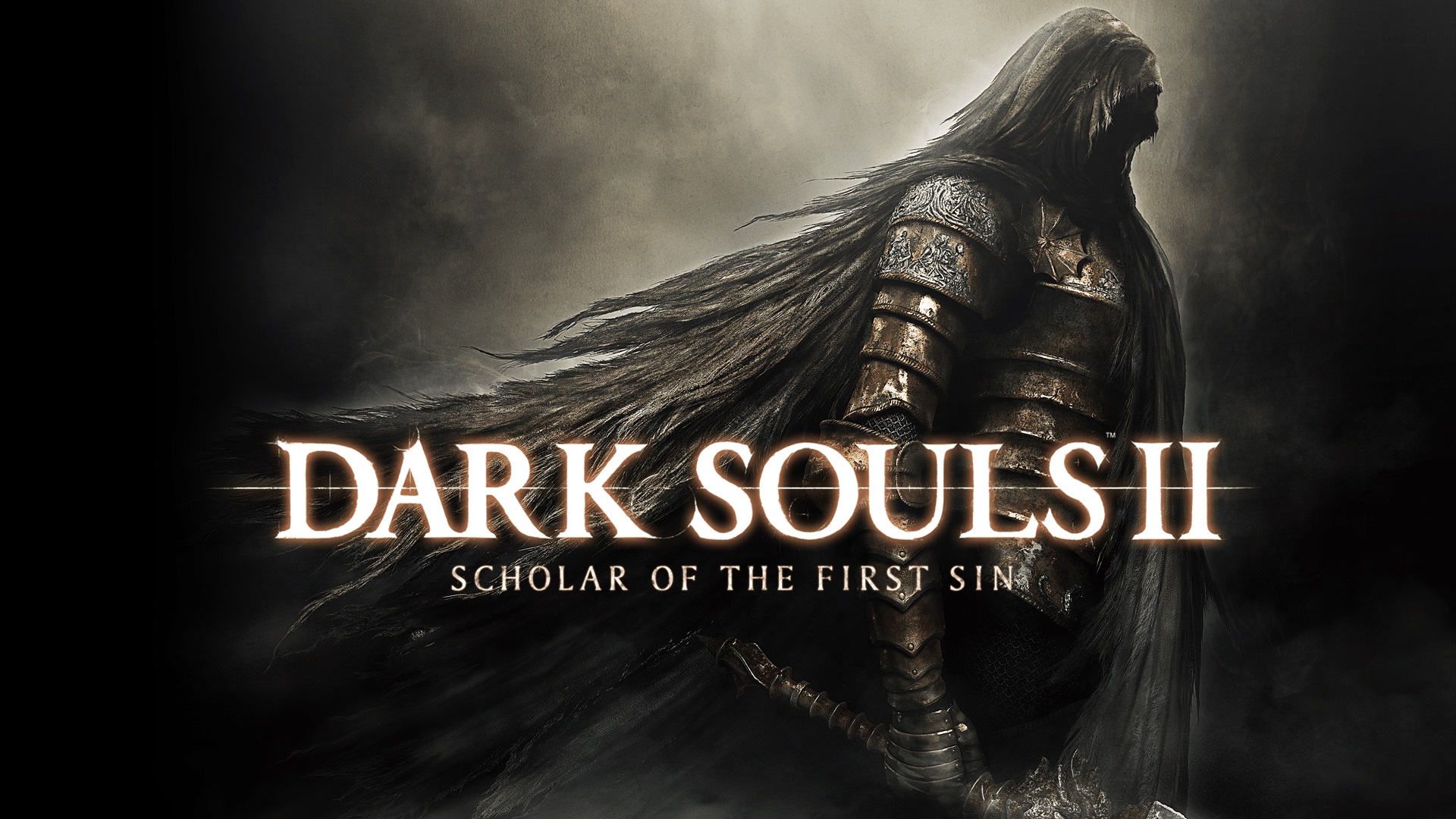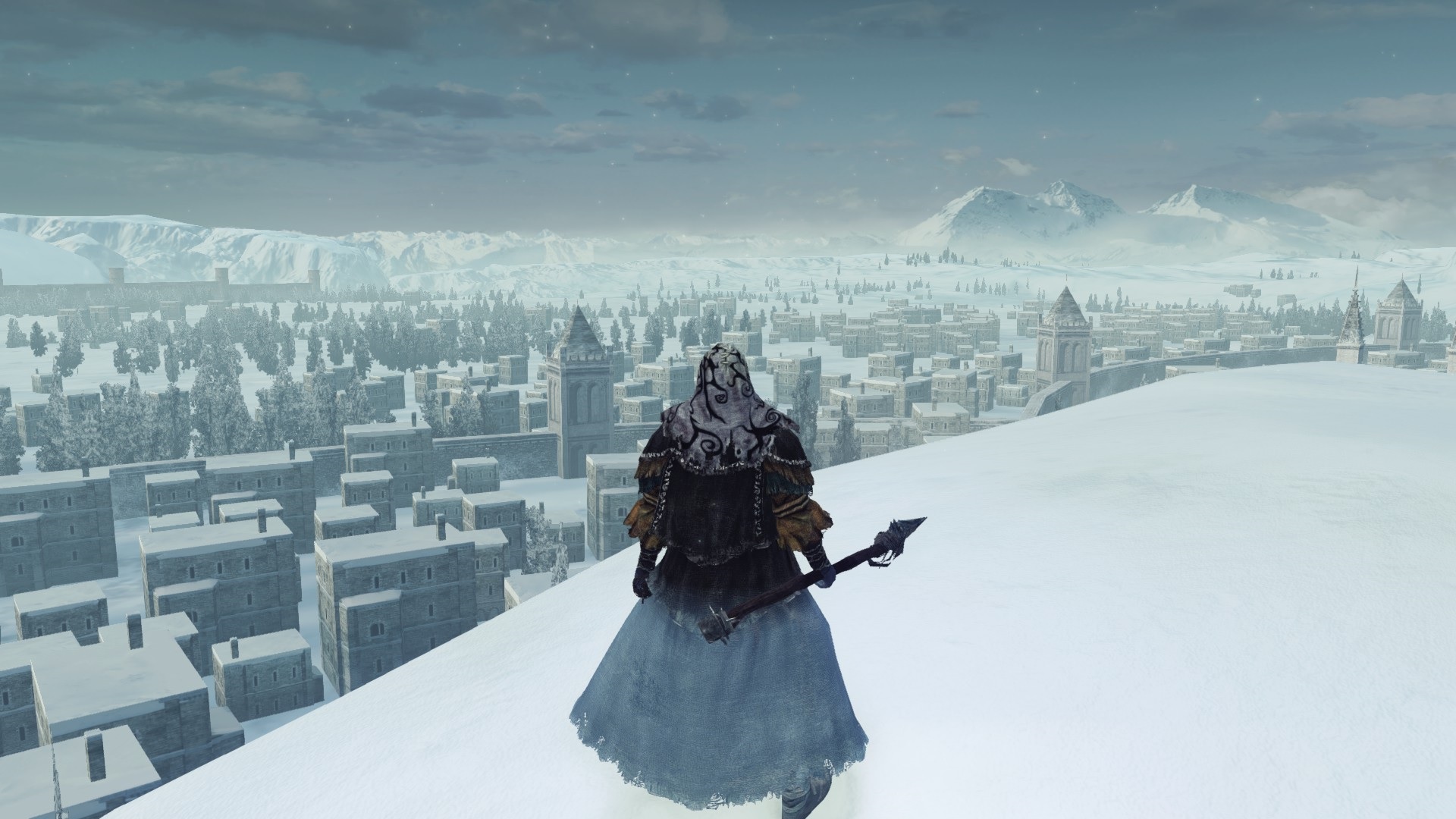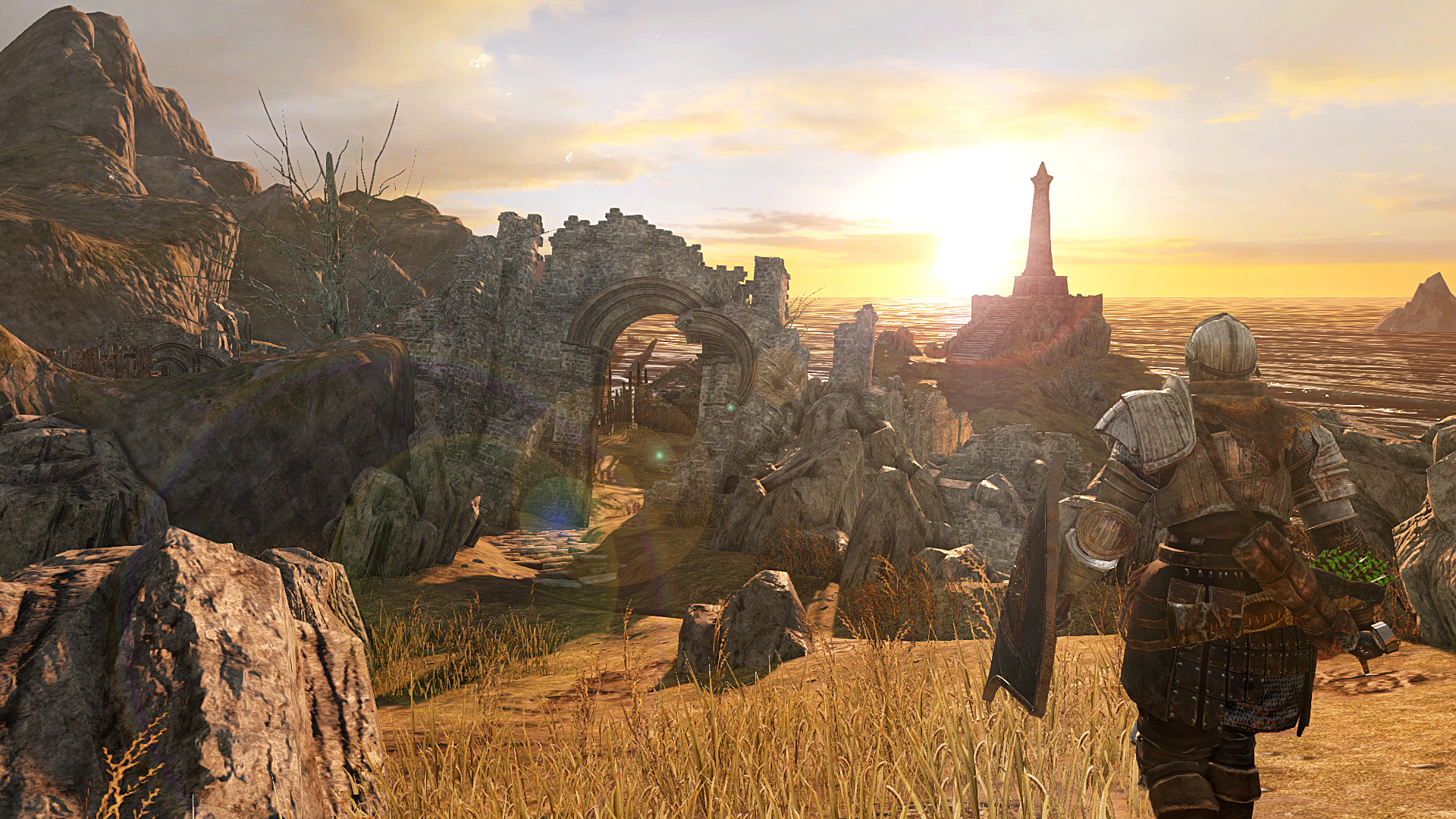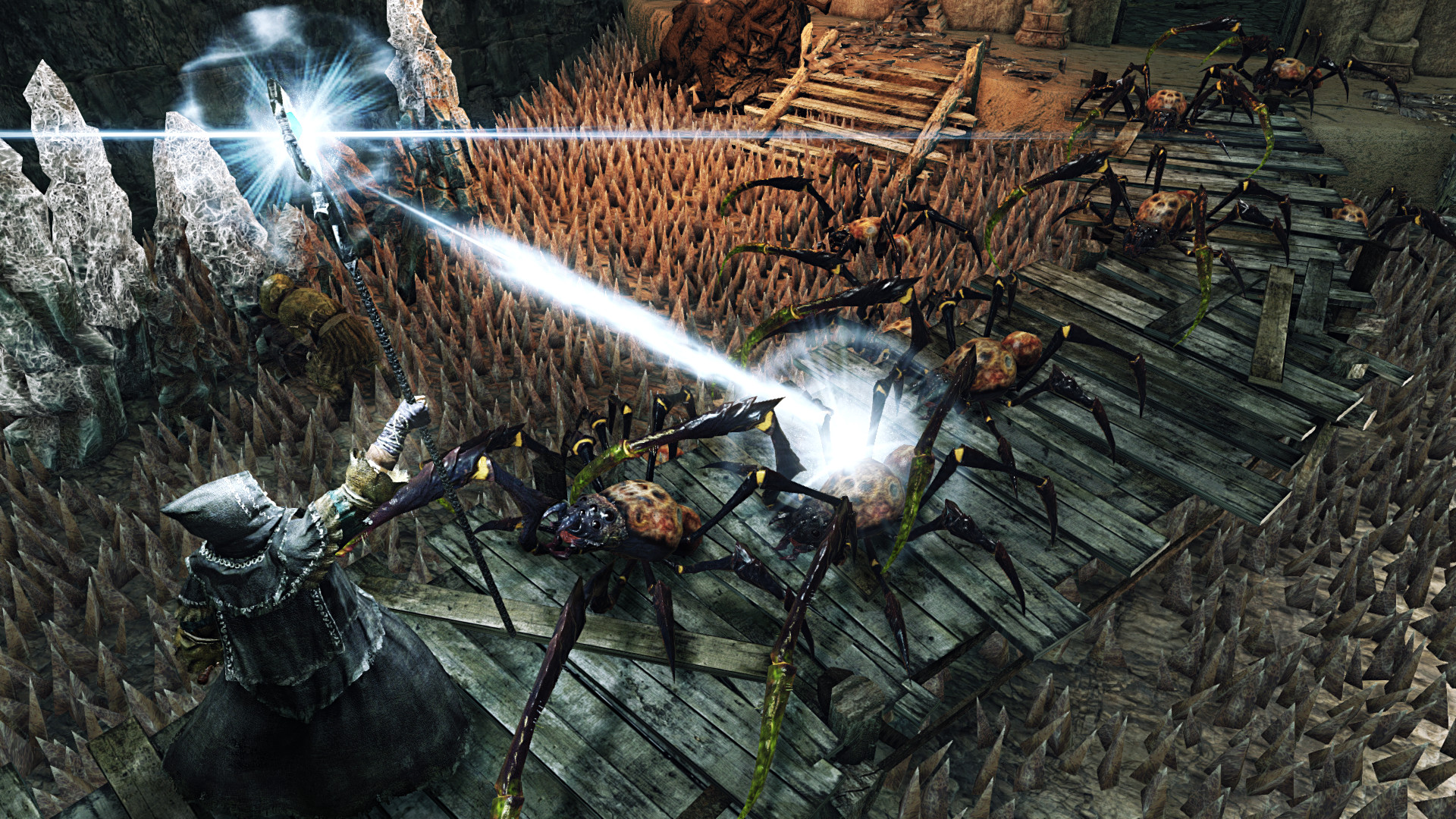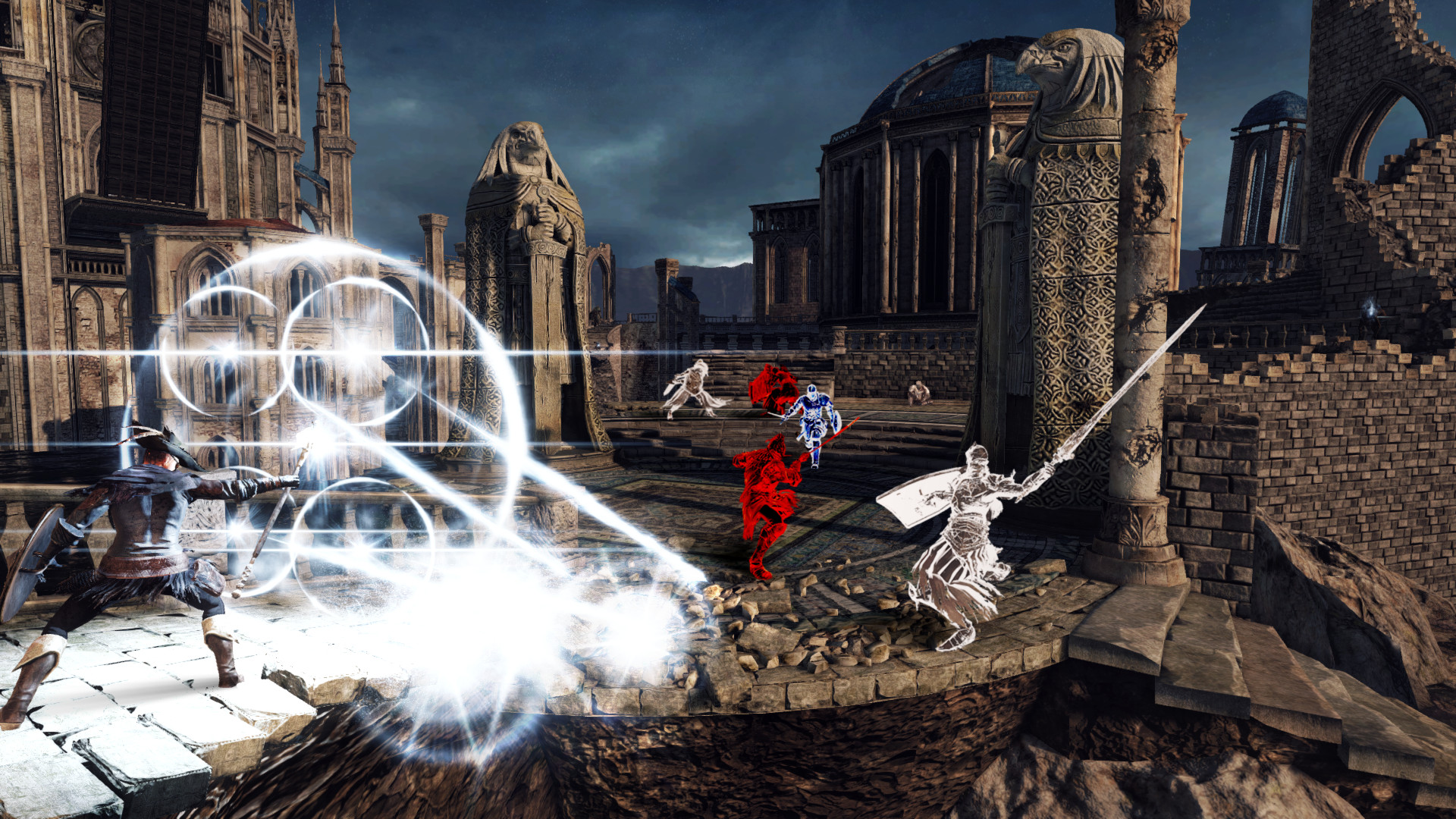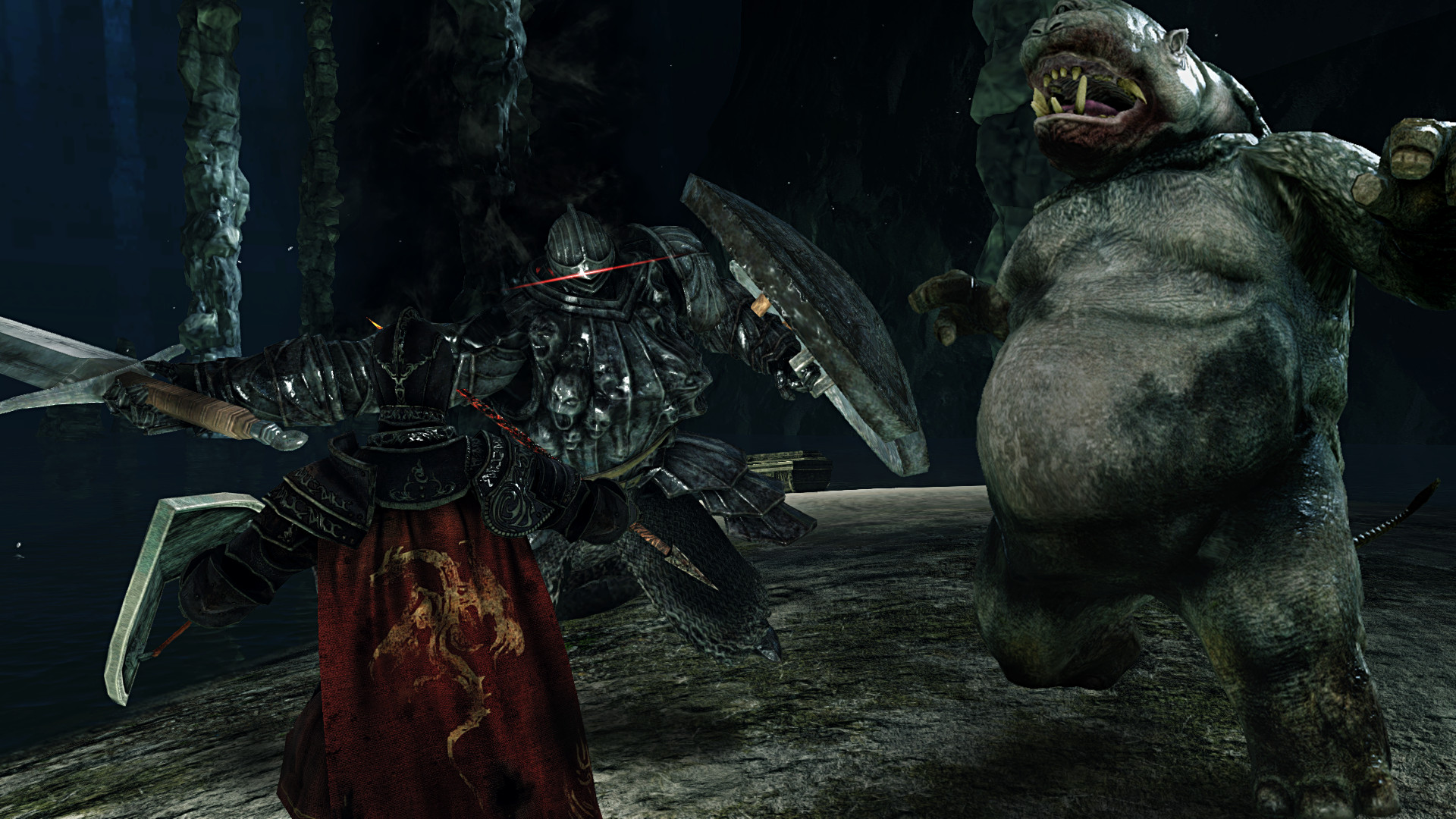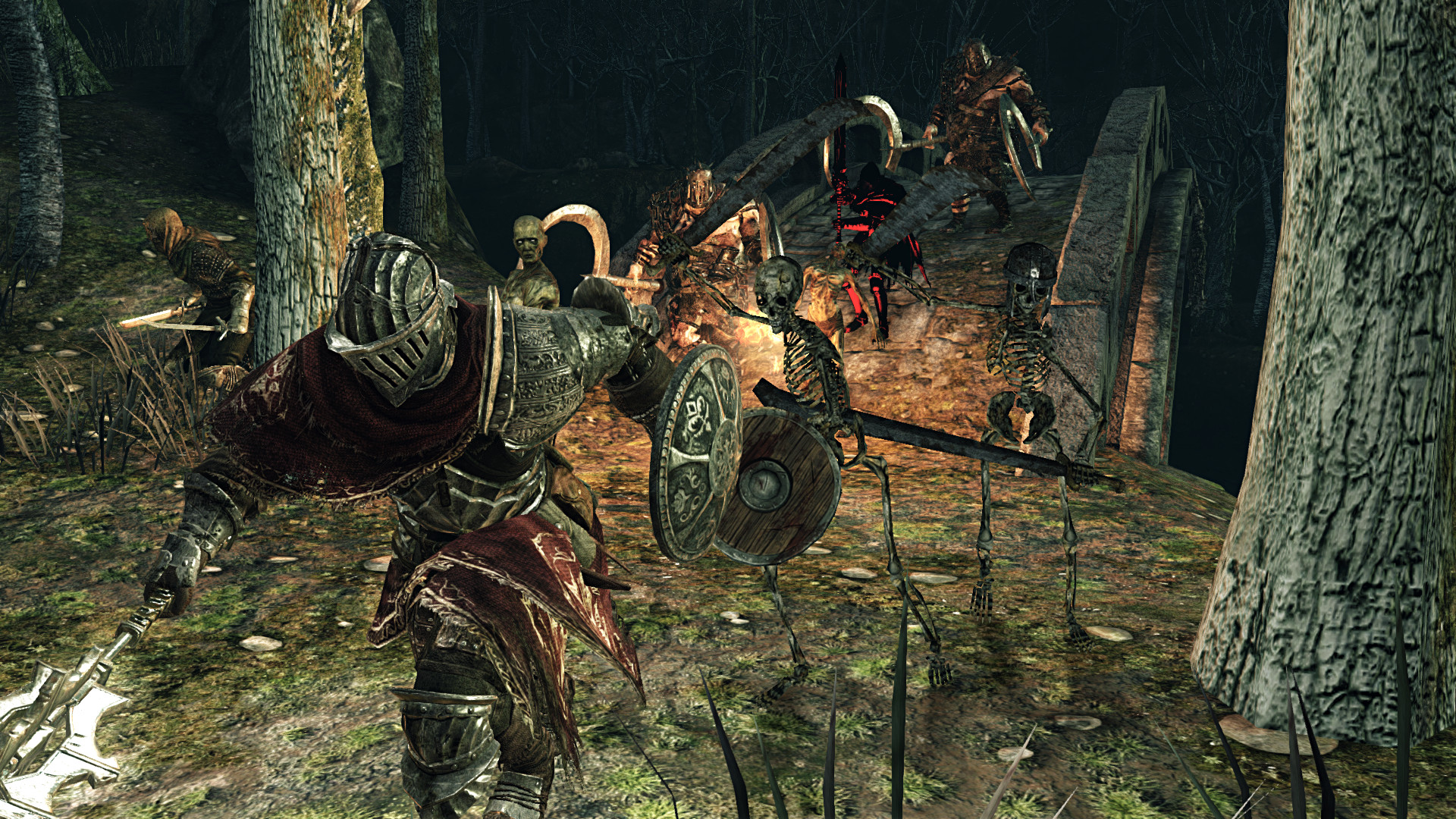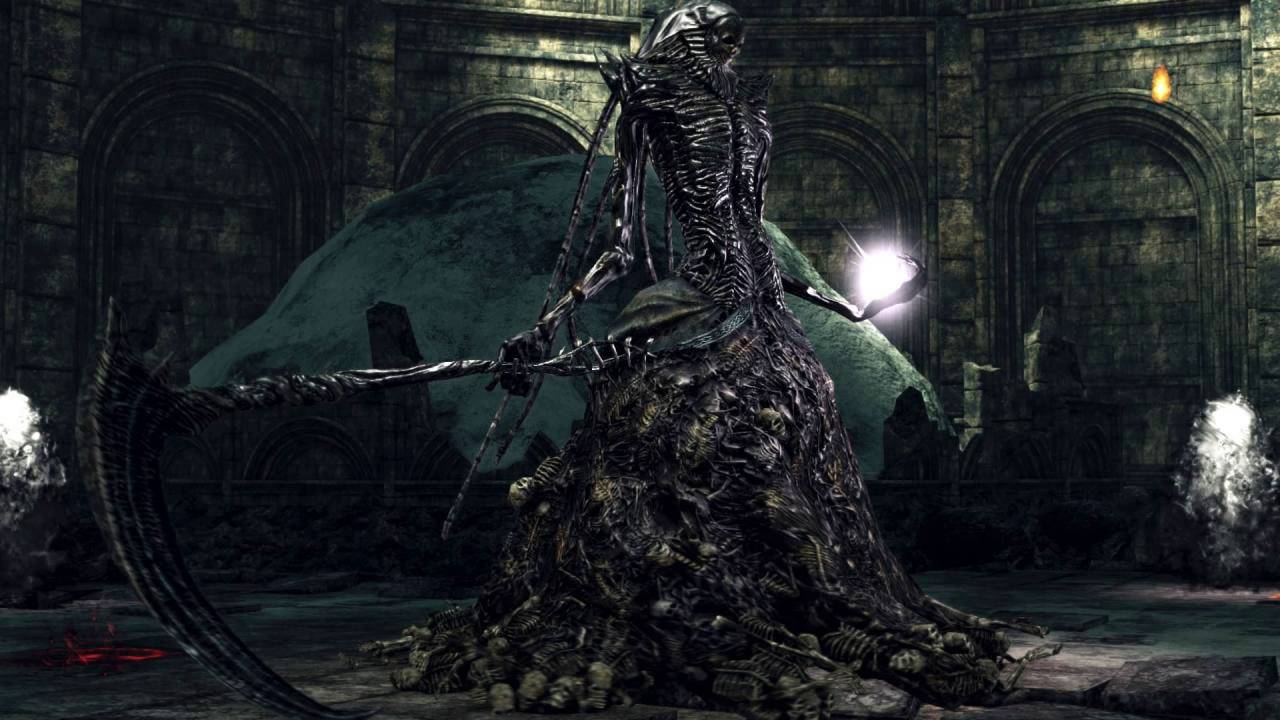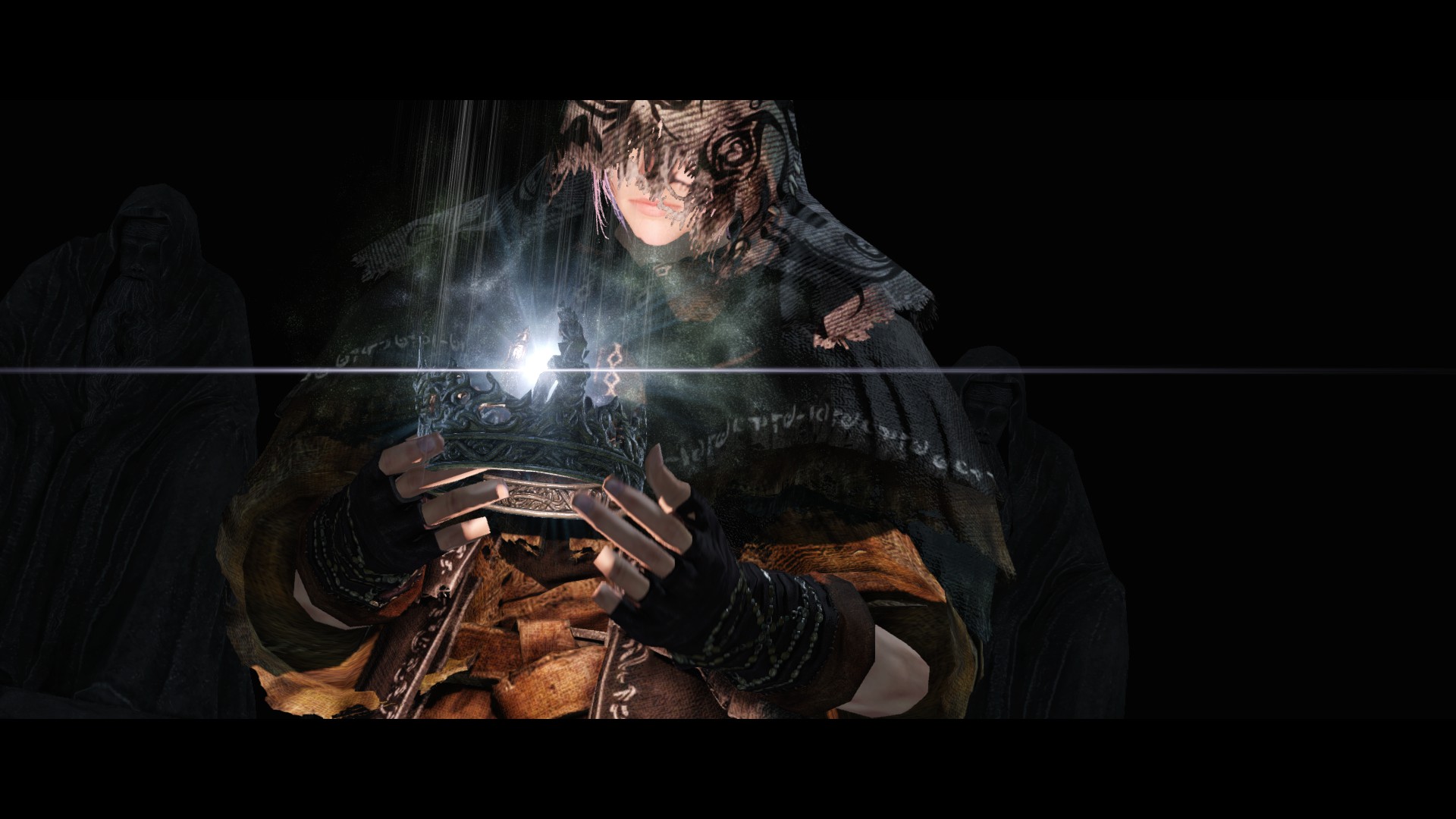Now you may be wondering: “Why the hell are you reviewing Dark Souls 2 almost a decade after it came out?”
Like moths to a flame, flies to poo or whatever other expression you may want to look for, I am drawn to Dark Souls 2. It is my least favorite game in the series, yet I keep coming back to it, there’s just something about it.
Dark Souls 2 was not made by FromSoftware’s main team, Hidetaka Miyazaki allowed a secondary team to take care of the game because he was was too busy with Bloodborne‘s development at the time.
The game’s scope quickly grew into an open world title, something that FromSoftware wouldn’t attempt until recently, and it makes sense why they put it off for so long.
Dark Souls 2: Scholar of the First Sin
Developer: FromSoftware
Publisher: Bandai Namco Entertainment
Platforms: PlayStation 4, Xbox One, PlayStation 3, Xbox 360, Microsoft Windows (Reviewed)
Release Date: April 1st, 2015
Players: 1-6
Price: $39.99
Much like the first game in the series, Dark Souls 2‘s development was rocky, which led the game to be rushed, ending up with its open world concept being scrapped, and the very impressive lighting engine that was showcased getting removed because of hardware limitations.
Almost everything that was planned for the game had to be reduced in scope, so Dark Souls 2 released, functioning, but nowhere near what it was supposed to be.
That doesn’t mean the game is immune to criticism nor does it mean that if given enough time it would be good. FromSoftware’s B Team had their work rushed and got lost in the scope of a new game, but what is shown consistently throughout Dark Souls 2 is the lack of a guiding hand.
The game’s lack of tact is immediately shown in the first few cutscenes, where the narrator keeps going on about how much you will die, hollow out and lose your souls; a very heavy-handed attempt at reminding you that the game is hard.
Thankfully, this doesn’t happen often, but it leaves a sour taste in my mouth every time I listen to it.
The game starts out visually strong and manages to stay like that for quite a while, the walk from Things Betwixt to Majula shows how beautiful some of the game’s areas can be, especially with the use of seaside locations.
Majula has to be my favorite hub area in the series, the music, atmosphere and overall feeling of calmness the place gives out are all amazing.
Both of the series Firelink Shrines are iconic hub areas, but they are accompanied by a depressing atmosphere, they may be more fitting for the franchise’s tones, but I enjoy having a nice and bright area in an otherwise very brown and dull game.
Unfortunately, it’s around here where my praises for the game run out, as soon as we enter actual gameplay.
The game’s insane decision to make rolls tied to a stat is immediately felt after the Last Giant’s boss fight, as the more humanoid enemies and bosses will clip the player during their rolls a lot.
Dark Souls 2 already has some awful hitboxes, and this system made their reputation way worse due to the player’s lack of invincibility frames, which make the game feel unfair at times.
What’s completely nonsensical is that the player already starts with 80-something agility, only needing a few more points to make the roll less awful, so what even is the point to give the player an almost good roll?
Dark Souls 2‘s level design suffered when the game was reduced in scope, which only further showcases its awful enemy placement.
Dark Souls 2 is also the only game in the franchise with an instant kill trap that isn’t communicated to the player. When the player approaches a specific door in Aldia’s Keep they are punched in the face by a giant ogre and die instantly.
This may not sound like a huge deal, but every trap in the souls series is actually communicated really well to the player, taking for example the Wyvern in Dark Souls 1, the player is warned as soon as they enter the Undead Burg, when he lands in front of you.
Afterwards, in the bridge leading up to a tower, the ground is completely charred and there are dead bodies on the ground, which further show to the player that something lurks around that bridge.
It’s the care for environmental storytelling present in both the first and third game that make Dark Souls 2‘s flaws so much more apparent.
Dark Souls 2‘s insistence in using the previous game’s lore also makes it feel more like fan work than canon, since the game keeps trying to shoehorn elements or characters from the previous games into its lore.
Seath the scaleless is a mandatory boss for Dark Souls 1‘s progression, he needs to be killed so his soul can be placed on the Lordvessel, but the player finds both his soul and corpse just hanging around after a boss fight.
It’s things like these that just make me wonder what the point is. Why bother going through such lengths to make a compelling story but then force it to stand on the shadow of its predecessor?
Throwbacks like the Scorpioness Najka fight also feel backward, as Queelag’s fight in the previous game was way more impressive and had so much more weight to it, why make a worse version of the fight but with sorcery instead of pyromancy?
The game in general also really upped the unfairness, NPC invaders are juiced up beyond belief, and gank squads are plentiful even during bosses.
Dark Souls 1 had its fair share of tough spots, but something like the Capra Demon fight doesn’t come close to bosses like the Royal Rat Authority, which is accompanied by 5 toxic rats with minuscule hitboxes that jump simultaneously on the player.
Dark Souls 2 assumed that it had to be harder than its predecessor to be a good game, failing to realize that the difficulty was only part of its charm.
One of the few redeeming qualities that Dark Souls 2 has come from the underlying themes on the game’s plot.
When the game isn’t trying to shoehorn itself into Dark Souls 1‘s lore it actually has some really good ideas, things like the act of wanting being humanity’s curse end up being very interesting as concepts.
The theme of being cursed with want encapsulates a lot of characters in the game, especially the main villain, Nashandra.
The game’s final boss carries with her the smallest piece of the dark soul, she is weak, and in weakness her wanting grows, which transforms Nashandra from a kind ruler, who supposedly brought peace to the kingdom, into this horrible being whose mere visage is cursed.
Maughlin, the game’s first armor merchant is also a good example of this; he starts off as a stuttering shy man, who eventually becomes rude and arrogant once his shop starts doing well, the problem is that his success makes him forget why he even opened his shop to begin with.
Dark Souls 2‘s themes of greed and what real accomplishment actually means make for an interesting observation of the human psyche.
If want is what moves us forward, what happens when we finally get it? Even more, what happens when we finally run out of things to want?
I really wish I could say I left this playthrough with some newfound respect for the game, but actually playing Dark Souls 2 is a chore.
Any of FromSoftware’s newest releases, especially in terms of polish, manage to almost make Dark Souls 2 retroactively worse, something I did not think was possible.
It makes me really sad that the good parts of the lore and the beautiful seaside environments are stuck in a game this unfun to play.
Dark Souls 2 has beautiful environments and interesting philosophical questions, followed by really mediocre gameplay and an ever-present feeling of being left unfinished.
Dark Souls 2: Scholar of the First Sin was reviewed on Microsoft Windows. You can find additional information about Niche Gamer’s review/ethics policy here. Dark Souls 2: Scholar of the First Sin is available on PlayStation 4, Xbox One, PlayStation 3, Xbox 360 and Microsoft Windows (through Steam).
